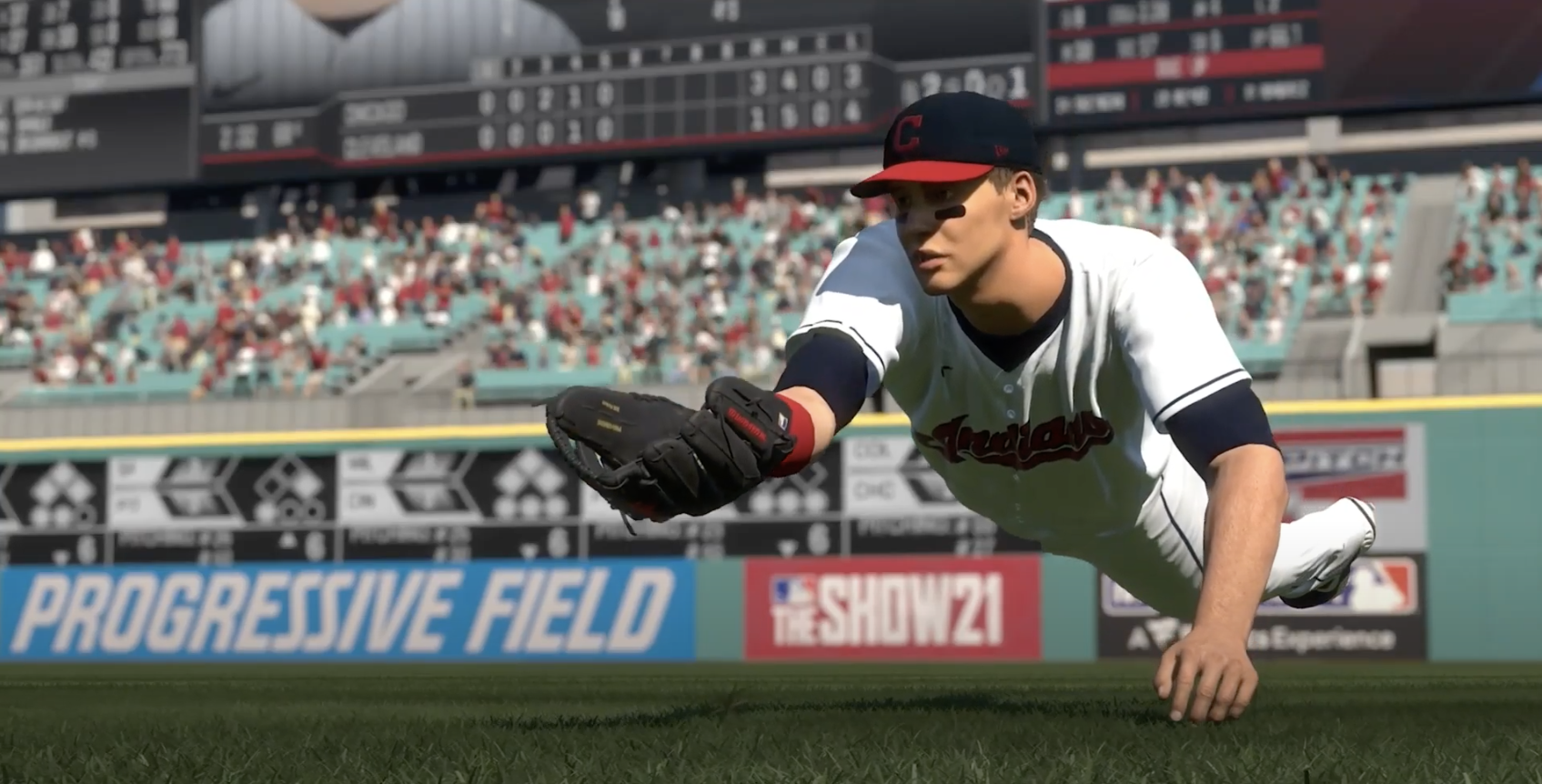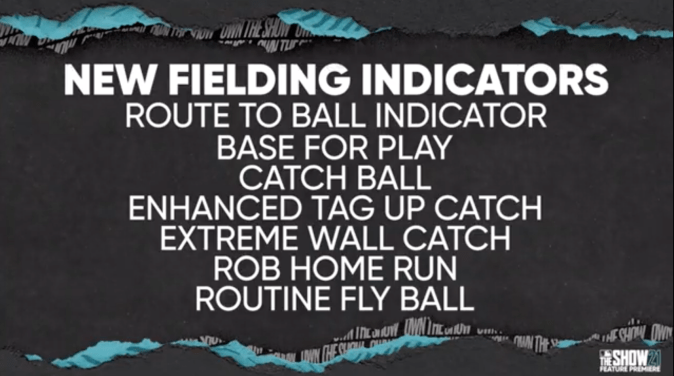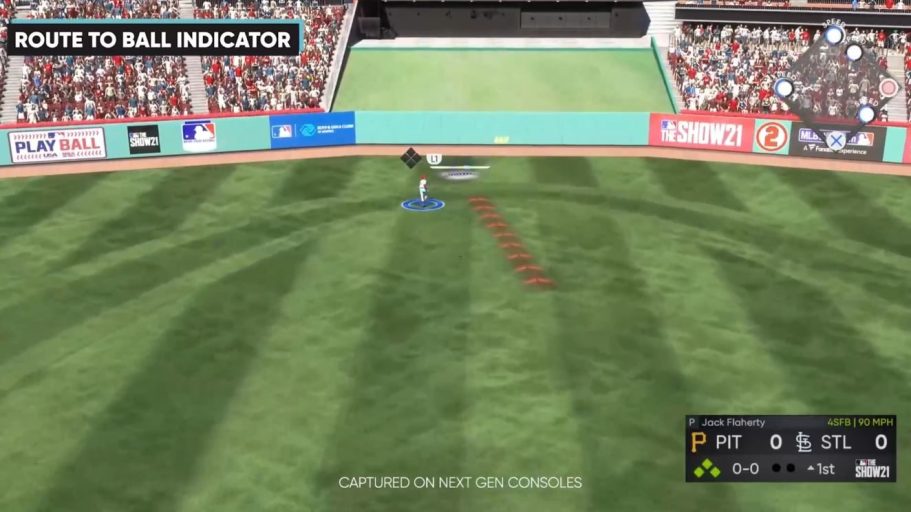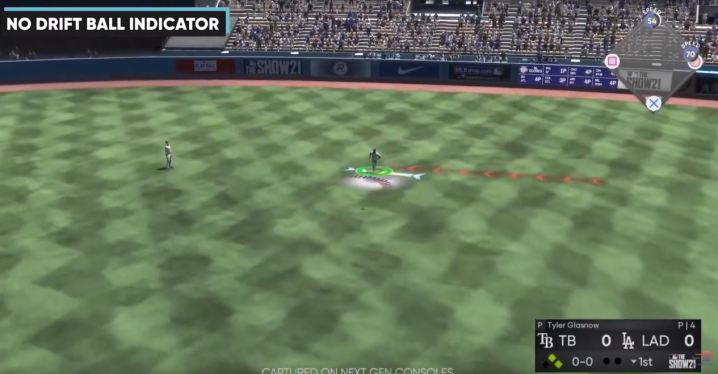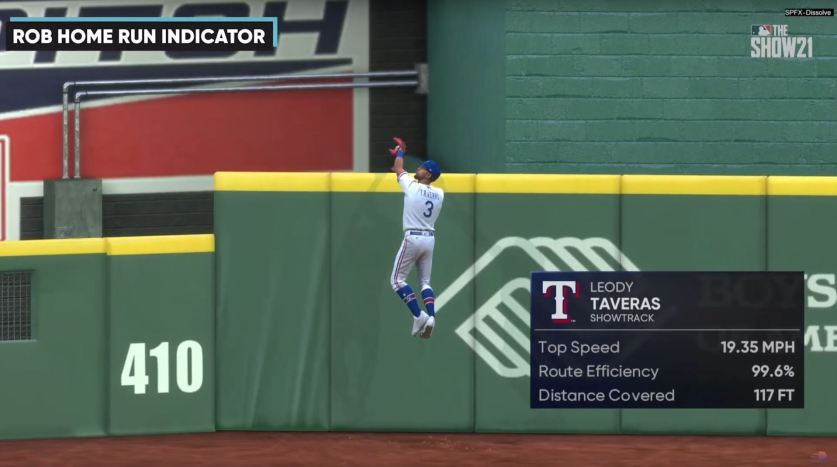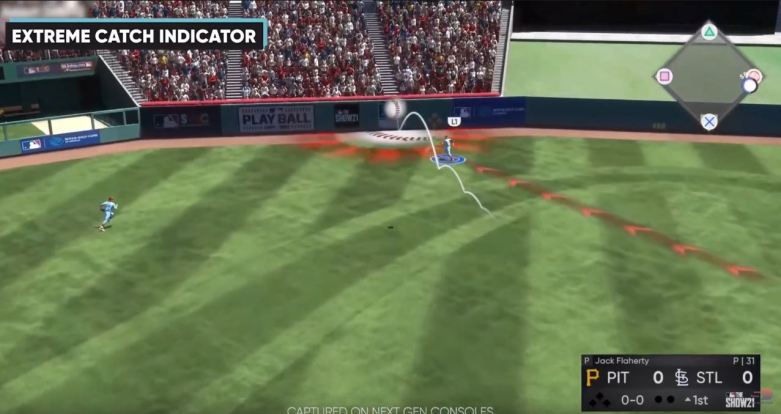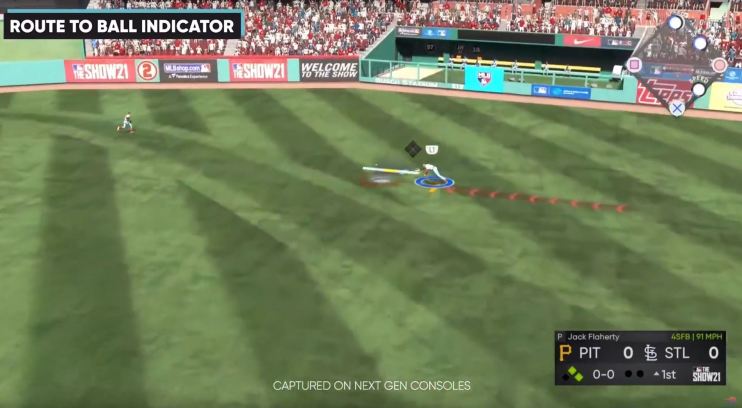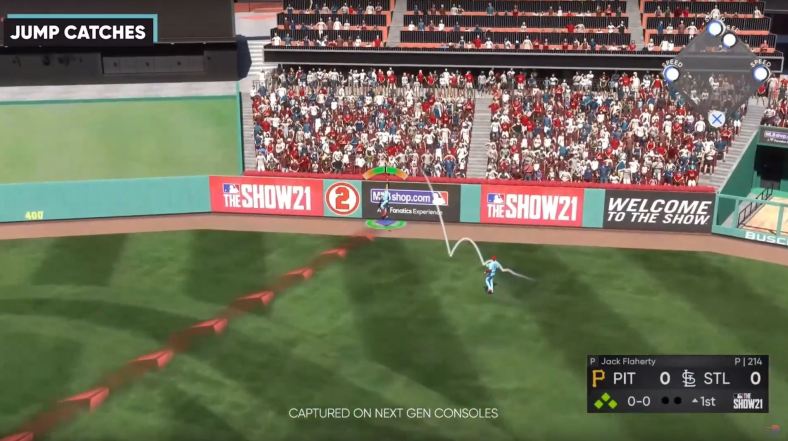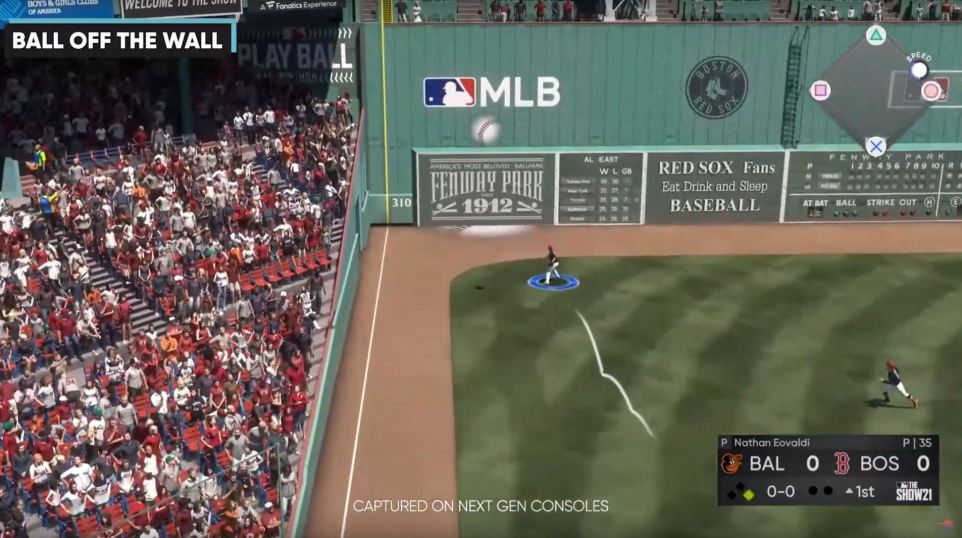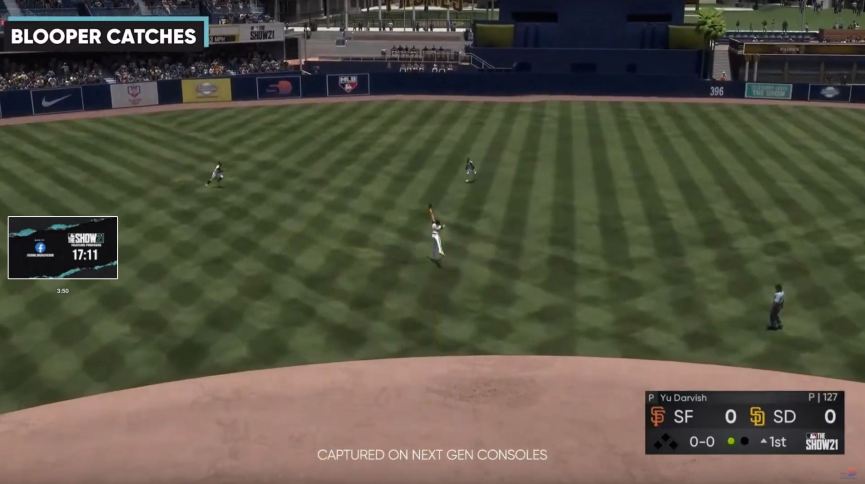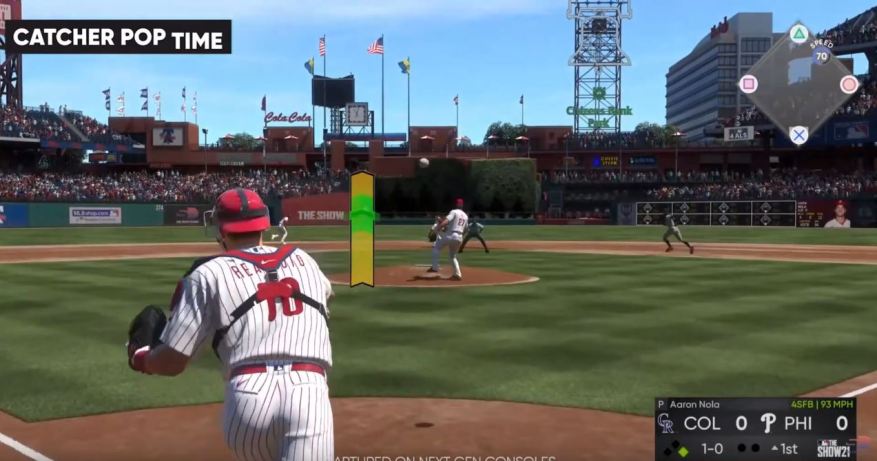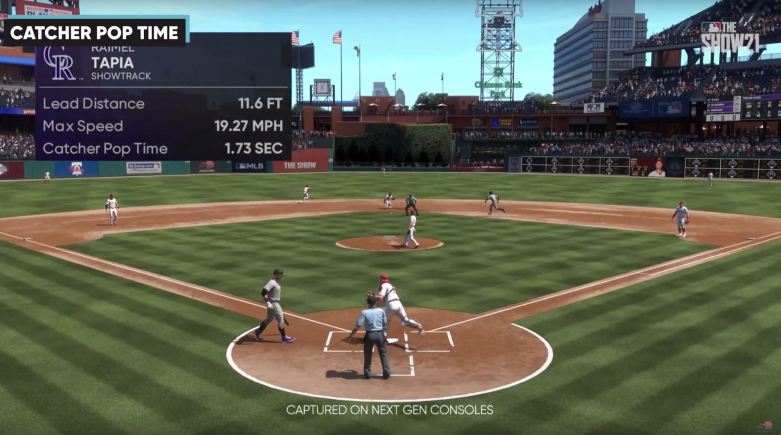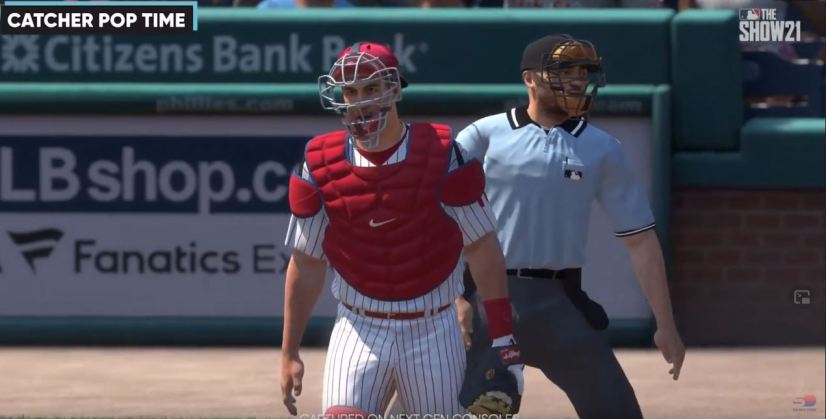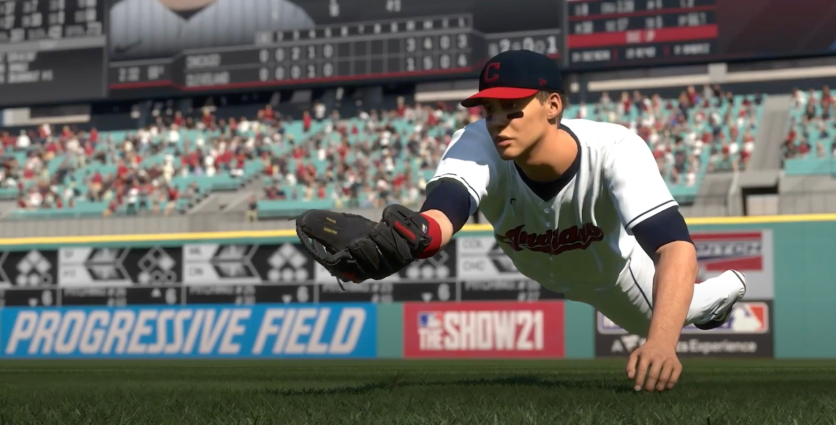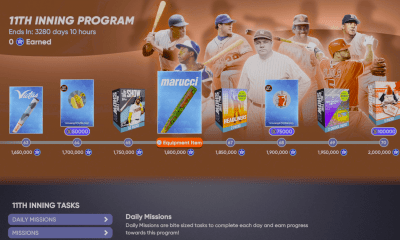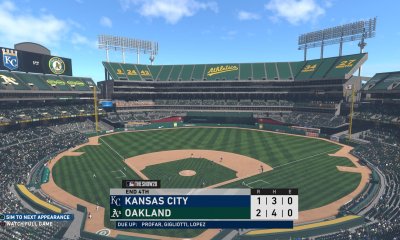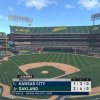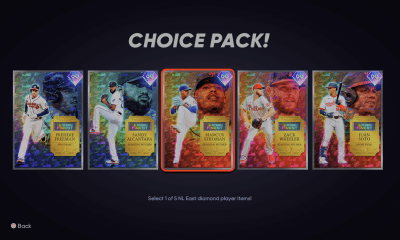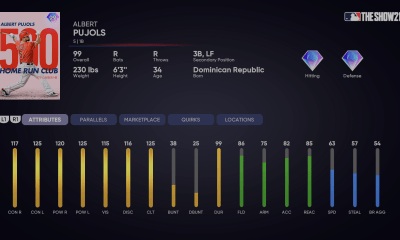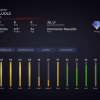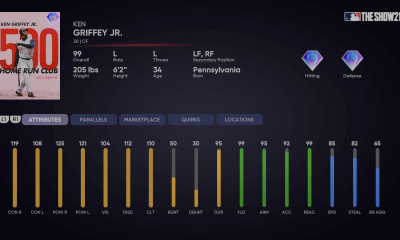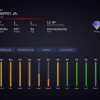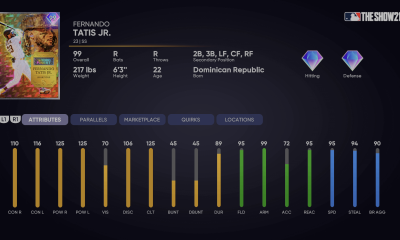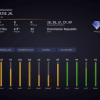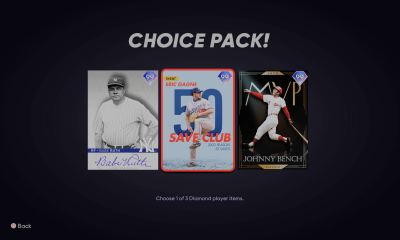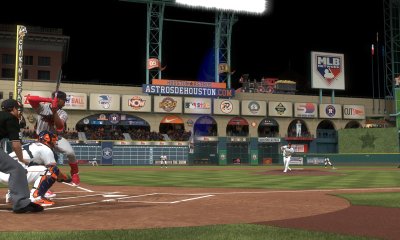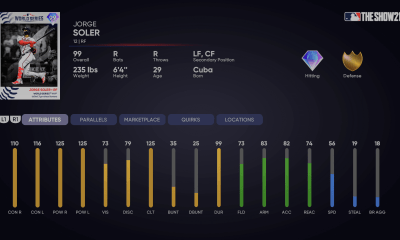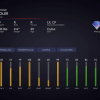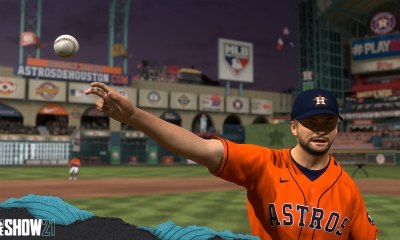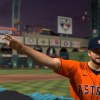MLB The Show 21
MLB The Show 21 - Fielding Overhaul Focuses on Removing Annoyances
Ramone Russell and Chris Gill from San Diego Studio gave us another peek under the hood today with the limelight this time being on fielding in MLB The Show 21. They focused mainly on onboarding new users and overhauling outfield fielding.
Fielding In MLB The Show 21
Gameplay director Chris Gill joined the discussion this week, noting how much developers learned from last year’s mistakes. Animations at the wall, general outfield AI, gameplay indicators, and the fluidity of gameplay were all major focal points this year.
But first, with all the new players coming to MLB The Show 21 this year on the Xbox platforms, introducing the rookies to the game was an emphasis as well. Part of this onboarding will come down to how you are guided by the game based on the “style” you pick (as explained last week), and the other part comes in the form of more fielding indicators.
These indicators listed above will matter for rookies playing their first Show, but they’re also going to come into play for veterans as well. The new indicators are there to help teach folks how to properly and more efficiently play defense across the board. These indicators should help new users in a number of ways, including handling some of the more intricate parts of baseball.
Route To Ball Indicator
We won’t go too in-depth on every new indicator, but the route-to-ball indicator shown above is basically there to detail the exact line your fielder should run on. The focus here is important because now being imperfect seemingly won’t lead you into as many situations where you’re doing circles around a ball on the ground (in tandem with some other changes we’ll mention), but you should have a better idea why you misplayed the fielding opportunity.
We spent a lot of time detailing this pick-ups issue last year in a couple of articles, so I’m going to show off an example of something MLB The Show 21 is trying to remove from this year’s game:
Chris Gill spent a lot of time talking about the number of new animations added to the game, and we like to think about what he was talking about with a lot of them as “transition” animations. The animations where you’re slightly off the mark, or you’re in a slightly weird spot on the warning track, and so on. These are the times you need the animation system to have enough versatility to kick in and transition your glove or adjust your fielder’s body just a pinch to pick up that white thing with the stitches on it.
Tag-Up Throws
Animation variety carries over into tag-up throws. Part of this is there is no longer a “drifting ball” element to the catch indicator on Casual, so you’ll know where you need to be at all times to make the play — you don’t have to chase around the baseball UI as it shifts and shrinks in the outfield. On higher difficulties, what matters is the animation variety. Again, for long-time veterans, you know how annoying it could be to be slightly off your angle somehow or to desperately try to line up a tag-up attempt, only for the ball to land in front of you, or you simply don’t get behind the throw as much as you think you should have.
The promise is there are a ton of new tag-up throw animations this year. This should help players with strong throwing arms get into a better position to throw out baserunners, or at the very least keep them at their current base on a more consistent basis.
Rob Home Run Indicator
Robbing home runs in MLB The Show 21 should be more common and definitely more intuitive this year. If a homer can be robbed, three yellow arrows will appear on the wall, indicating a robbery attempt can be made. The yellow arrows will gradually turn green, and when the third arrow is green, that’s your cue to jump and attempt to take one away. Gill explained that these timing windows will be flexible enough to work with the various ways fielders will reach the wall. Sometimes you’re at the wall early just waiting to jump, and sometimes you’re at a dead sprint, and the system is promising to be able to accommodate both.
The entire experience should be a lot more fun and rewarding. No longer will players simply reach above the wall to snag a would-be dinger. This year, players will actually reach their gloves over and beyond the wall to make those highlight reel, showcase plays. We didn’t get to see too many of these animations, but here’s to hoping we get some classic signature ones in the group.
Extreme Catch Indicator
In terms of plays where the ball will not be leaving, developers have added an extreme catch indicator to more situations. In addition to sinking line drives (that was where it would show up last year), we’ll now see these extreme catch indicators pop up on plays at the warning track (a big red glow around the baseball UI). On one hand, there’s a chance you could steal an extra-base hit. On the other, getting too aggressive on balls at the wall can result in the ball careening away from your player, subsequently rewarding your opponent with an extra base. Added to this function will be a yellow line for sinking line drives in the gap. This should make it easier to time up diving attempts to rob base hits with your outfielders.
Staying with plays at the wall — because boy have they been an adventure in previous games — here is an example of what SDS is trying to remove from the game this year (again, this comes from our breakdowns last year).
It sure does suck when that happens. The bonus in that GIF is you can see the pick-ups issue we mentioned earlier once again as well. But point being, catches at the wall should not be as much of an adventure anymore in terms of wondering whether your fielder will react to the ball or not. Now, it seems like he will react to the play, it’s just the outcome may still end up with you bummed out because you didn’t get to the wall in time or simply couldn’t make the catch (which is fine).
Still, that SDS went out of its way to also call out jump catches at the wall shows they are trying to attack this in a variety of ways:
Again, it’s not that these jump catches would never trigger in MLB The Show 20, it’s just you as a user had no confidence anything would automatically trigger, and if you pressed the jump button you knew more times than not the jump would not lead to your fielder even really noticing a ball was there at the wall.
Strafing
Mechanically, infield and outfield strafing will be completely different this year on fly balls — in that it will exist. It’s a more athletic, more fluid approach to catching balls. The result should be “really smooth gameplay.” This is more important than it seems for pop-ups because we have all had this weird situation kick in at times where your fielder just does not react to a pop-up. Again, here is a GIF from MLB The Show 20:
Strafing and the focus on pop-ups overall in terms of adding new animations should hopefully alleviate this issue.
But the biggest difference you’ll feel in terms of strafing pertains to balls off the wall. You can now setup at the wall in anticipation of a ball about to bound off the wall before playing it more efficiently.
No longer will you be locked in place for an animation, and you should be able to make smaller adjustments because the animation system is going to put you into a strafe situation when it’s needed. Basically, I’m thinking about it like getting down in a defensive stance in basketball. Your fielder is going to bend his knees and get ready to make tighter lateral movements. You can also move your player into the correct position up until the point that ball hits the wall. The result should be a more fluid, responsive reactions from your outfielders.
Off-the-wall retrievals/and off-wall catches will now be far more efficient in terms of animation chains to get the ball back in towards the infield in a more realistic motion too. There shouldn’t be nearly as much empty time after retrieving the ball — a quality change for those who missed throwing runners out due to a broken animation chain. The whole experience should feel just a lot more realistic and natural.
Infielders
Lastly, we’re going to roll bloopers, dribbler and “off-Z-axis catches” into this final group for infielders. With off-Z-axis catches, basically its SDS’ way of explaining those “transition” animations once again. When you’re trying to run down a ball in the gap or scoop up a dribbler, if you’re not perfect, your fielders are going to try harder to adjust and still pick up the ball rather than having those weird situations where it looks like you run right over the ball and do no animation.
One last time, let’s show MLB The Show 20 as an example:
Reach for the ball meat!
The hope on the infield is that the fielders attacking bloopers/bunts more aggressively and with more animation variety hopefully means there are fewer instances of your pitcher or infielders not being able to make plays at first base. Overall, the same concept applies to bloopers that are trying to sneak over an infielder’s head. SDS is really trying to cut out some of the “cheapies” that have frustrated a lot of us, not because they exist, but because they happen often enough that you can tell when they’re about to happen before they ever do.
In short, improved animation chains on dribblers in front of the plate and behind the mound have gotten a ton of attention.
Catchers And Nike Gear
(Oh yeah, as you can see above the fielding meter now just has mustard yellow and green now in all throwing situations. SDS said no one ever hit the red, so now they’re putting all the bad outcomes in the one yellow bucket for when you miss the green area. So you might get a really bad throw into the dugout or just a mildly off throw when you hit the yellow. Green and perfect throws remain the same otherwise.)
Another cool addition on defense in the introduction of catcher pop times, a very big metric for a catcher’s defensive value in the scouting community. A catcher’s pop time is the time it takes for a catcher to receive the ball and hit the infielder’s mitt at second base on a stolen base attempt. Catchers in this game will now have varying degrees of animation speed getting out of their crouch and getting the ball out on a stolen base attempt. Arm strength will still very much matter, but this is yet another wrinkle to help add to the defensive emphasis we’ve seen from the series in the last two years.
It’s not clear whether there is going to be a new rating or anything for a catcher’s feet or his mitt-to-throw transition speed, but it seems like something more is being calculcated somewhere if arm strength is no longer the only metric SDS is tracking for these pop times.
Oh, and since we have had people (specifically our good friend The Kid 24) plead for Nike catcher gear to make it into the game, yes, the Swoosh is finally there on the chest protector and leg guards (at the very least):
Grady Sizemore In MLB The Show 21
Finally, last but not least, the new legend reveal in MLB The Show 21 is Seattle’s finest, Grady Sizemore. The former Cleveland great was a five-tool centerfielder who was among the best players in baseball for about five years before injuries eventually derailed his career.
We have gone rather modern with the first two reveals between Alfonso Soriano and Grady Sizemore, so it will be interesting to see where SDS goes next with the reveals.


